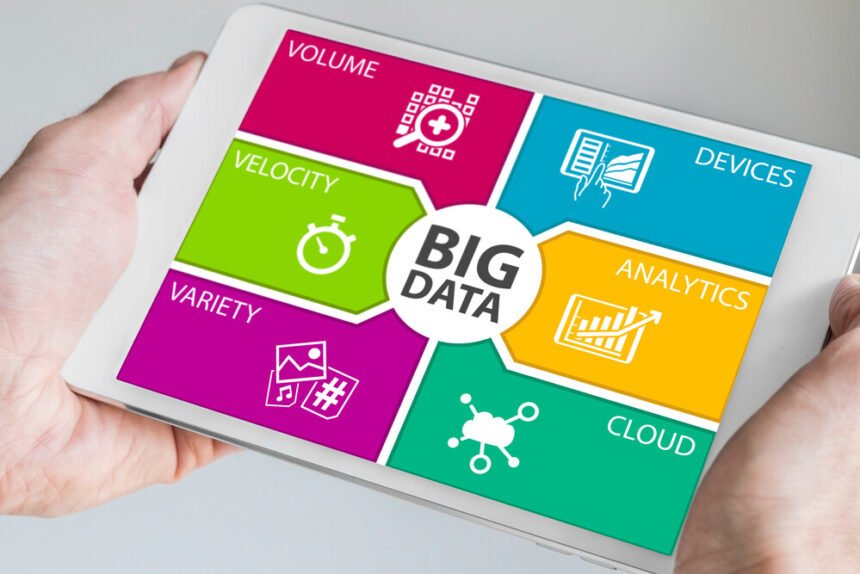The democratization of information and the quick access to the Internet have transformed most markets by making them transparent and extremely competitive. The current way of comparing prices and sellers resembles the one described in economic textbooks. Reaching that equilibrium is just a few clicks away.
But when price is no longer an advantage, companies need to create new ways to attract and retain customers, and those are closely linked to experiences. This is where Big Data comes into play, offering the necessary insights by tapping into BI consulting.
The SMART Approach
Managers are used to the SMART goals system for defining achievable targets. The same acronym, with minor changes, could be used to remember the key benefits of using Big Data for retail.
Specific
Transaction data, social media buzz, customer feedback, website logs – all help a company answer some particular questions and take guessing out of the equation by replacing it with data. You can now give accurate answers to inquiries like “Where do our most profitable customers live? How much did they spend this year compared to last year? What is the most likely item they will buy next considering their history and preferences?” Having information at this atomic level gives a company great flexibility and speed of reaction.
Measure
Performance management is all about defining the right KPIs. Big Data brings a whole new dimension by allowing unstructured data to be distilled into KPIs. With the help of this new tool, organizations can detect trends before these hit the market and adjust their offer accordingly. For example, a high traffic volume on certain search words related to a popular TV series could indicate an excellent lead for merchandise with that theme. Adding information about users from their profiles narrows down the list of articles even more and creates best sellers.
Analysis
The use of Big Data for analysis to enhance knowledge in retail can unfold on multiple levels:
- Customer analysis – it allows learning about what makes your clients convert from casual to regular, finding out what they really want as a reward for their loyalty and driving retention and goodwill.
- Inventory analysis – unutilized stocks are some of the most significant sources of waste for a company. Get all the data about inventory, best/worst performing products and plan for success by looking at trends.
- Predictive models – in a business sector with profit margins around 3%, you need to know what your customers are going to buy and in what quantities.
- Price optimization – price is no longer the reason to choose a specific retailer, but dynamic optimization can make a difference if the displayed value is just a bit less than what you saw on the competitor’s website.
- Marketing – looking at data provided by free platforms like Google Analytics or Facebook Insights can give you an overview of your clients, their behaviors, and their preferences.
Relevant
To convert Big Data into big business, you need to select those insights that are giving hints about the clients’ behaviors in the long term. The relevance factor is best revealed by answering the question: Is this information going to help someone take a better course of action?
The self-service dimension enhances the relevance of a particular set of well-organized data by giving power to the employees in the front line.
Timing
Customers have preferred times to shop, and even something as simple as weather could boost or sink sales. For example, a pizza chain used to send their clients coupons based on rain forecasts, and a hotel chain raised booking volumes by looking at canceled flights.
Timing means giving your clients the right incentive when they are ready to listen to you and navigating the crowded space of advertising. Acting in real time provides a true competitive advantage.
Retail between Art and Science
A few decades ago when analytics were only drawn at the end of the month or even the quarter, numbers were just a way of visualizing retail agents’ skills. Now numbers are dictating how a sale should be carried out. You could say it’s not about the art of persuasion anymore, but about moving to the science of selling.
Challenges of Using Big Data for Retail
The most significant problem of Big Data is to select the right metrics from the ocean of information and create a coherent narrative. It’s about organizing all the available records in a unitary dashboard that can be used by non-technical specialists to answer daily questions about stock, distribution or pricing.
The second challenge is related to the accuracy and cleanliness of the data. AI models that use Big Data are only as performant as the underlying quality of the information fed into the system. Different sets or types of data extracted from various sources need to be transformed to be technically viable.
Thirdly, security remains a primary concern when manipulating customer data that could include personal data like banking transactions and home addresses. The systems aiming to use these sets to provide a personalized experience should use the latest advancements in encryption and data protection. Also, the algorithms behind customization are expected to make the client cared for, not stalked. There is a fine line between top service and creepiness.
Is Your Company Ready to Handle the 3Vs?
Big Data is defined by the 3Vs: volume, velocity, and variety. In the age of globalization, the same features could easily be used to describe retail.
With open borders and online selling helped by no-stock business models, sales volumes are mostly dictated by the ability to persuade the client. Velocity comes in the form of a 24/7 working schedule, across different time zones. No longer can a retail unit operate 9-5 and only during weekdays if they want to exist. Big Data could even tell you what the best hours for your target clients are. Variety manifests the type of inventory, customer profiles or the mix of expectations the clients have about a company.
Using analytics to make all these puzzle parts work together is no longer an option, but a survival tool.









